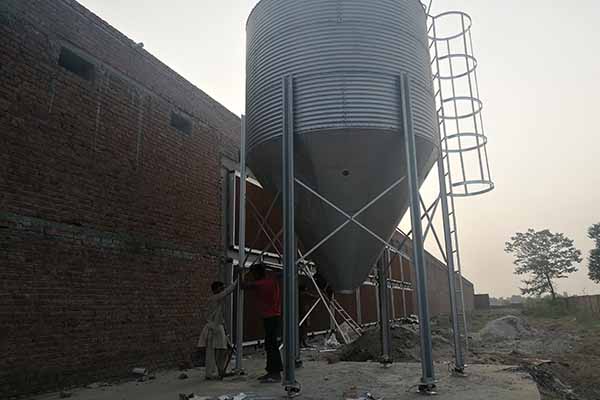Uganda Chicken Farm Automation Equipment: Energy Saving Effect and Efficiency
Time : 2025-07-03
In the fast-evolving agricultural sector, Uganda’s poultry industry is no exception. With the increasing demand for chicken meat and eggs, there is a growing emphasis on automating chicken farms to enhance productivity and reduce costs. One crucial aspect of farm automation is the efficient use of energy-saving equipment. This article explores the use of automation equipment in Uganda’s chicken farms and the significant energy-saving effects it brings.
Introduction to Uganda’s Chicken Farming Industry
Uganda’s chicken farming industry has been experiencing remarkable growth over the years. The country has become one of the leading producers of chicken meat and eggs in East Africa. To meet the rising demand, chicken farmers are turning to advanced technologies to improve their operations.
The Need for Automation in Chicken Farms
Automation in chicken farming involves the use of advanced technology to automate various farm processes. This includes feeding, watering, egg collection, and environmental control. The main objective of automation is to improve efficiency, reduce labor costs, and increase productivity.
One of the critical components of automation is the use of energy-saving equipment. These devices are designed to reduce energy consumption while maintaining optimal conditions for the chickens. This article focuses on the energy-saving effects of automation equipment in Uganda’s chicken farms.
Energy-Saving Automation Equipment for Chicken Farms
1. Feeding Systems: Modern chicken farms use automated feeding systems that provide a consistent and balanced diet to the chickens. These systems are equipped with sensors that detect the amount of feed required, ensuring that there is no waste. By reducing feed waste, energy consumption is minimized.
2. Watering Systems: Automated watering systems are another energy-saving component. These systems use water-efficient nozzles that provide water on demand, reducing water and energy consumption. Additionally, these systems minimize water loss due to spillage and leakage.
3. Environmental Control Systems: Chicken farms require controlled environments to ensure the health and productivity of the chickens. Automation equipment, such as fans, heaters, and humidifiers, can be programmed to maintain optimal temperature and humidity levels. This reduces energy consumption compared to manual control.
4. Ventilation Systems: Proper ventilation is crucial for maintaining a healthy environment in chicken farms. Automated ventilation systems use sensors to monitor CO2 levels and adjust the airflow accordingly. This ensures a comfortable environment for the chickens while reducing energy consumption.
5. Lighting Systems: Lighting plays a vital role in chicken farming. Automated lighting systems can be programmed to provide natural light during the day and artificial light at night. This helps in reducing energy consumption while maintaining the chickens’ natural circadian rhythm.
The Energy-Saving Effects of Automation Equipment
The use of automation equipment in Uganda’s chicken farms has several energy-saving effects:
1. Reduced Energy Consumption: By optimizing various processes, automation equipment minimizes energy consumption. This leads to significant cost savings for chicken farmers.
2. Enhanced Efficiency: Automated systems are more efficient than manual labor, as they can perform tasks faster and with greater precision. This results in reduced energy usage.
3. Environmental Benefits: Energy-saving equipment helps reduce the carbon footprint of chicken farms, contributing to environmental sustainability.
4. Increased Productivity: With automated systems, chicken farmers can focus on other critical aspects of their operations, leading to increased productivity.
Conclusion
The integration of automation equipment in Uganda’s chicken farms has brought significant energy-saving effects. By optimizing various processes, automation equipment has reduced energy consumption, enhanced efficiency, and improved productivity. As the poultry industry continues to grow, the adoption of energy-saving automation equipment will become even more crucial in ensuring sustainable and profitable operations.












